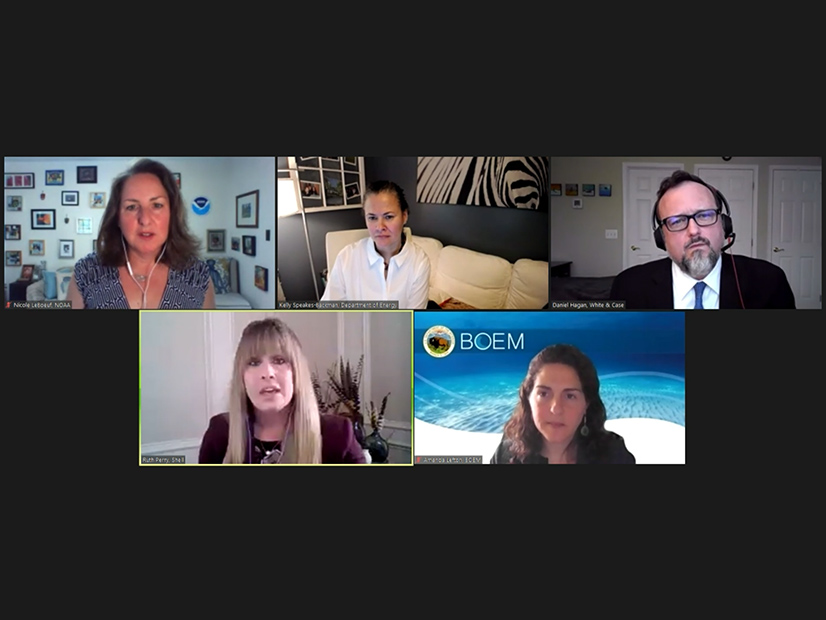The Biden administration is taking a whole-of-government approach to meeting its goal to deploy 30 GW of offshore wind by 2030, a top federal energy official said Wednesday.
Speaking at the Reuters’ U.S. Offshore Wind 2021 conference, Acting Assistant Secretary of Energy Kelly Speakes-Backman said the road to 30 GW by 2030 could pave the way for the U.S. to become a net-zero economy by 2050, given that the fastest — and most cost-effective — way to get there is the decarbonization of the electric grid.
The effort could also trigger billions in capital investment, create tens of thousands of jobs, generate enough renewable energy to power millions of American homes and significantly reduce carbon emissions. Reaching the target will require the federal government’s close coordination with states, private-sector partnerships, unions and other key stakeholders to scale up efforts from concept to construction.
Speakes-Backman said that much of the near-term carbon-free energy is going to be onshore wind and solar PV, though “that’s not going to be enough.”
“We need every clean energy resource we can get to address this climate emergency,” she said.
On Tuesday, the Biden administration announced plans to offer leases for California’s first OSW areas, a 399-square-mile block off Morro Bay that could support 3 GW of resources; the Humboldt Call Area off Northern California is big enough for an additional 1.6 GW. (See BOEM to Offer Leases for Calif. Offshore Wind.)
“[Tuesday’s] announcement is so significant because this wasn’t the Department of Interior in California saying, ‘We are going to advance offshore wind in the Pacific,’” said Amanda Lefton, director of the Bureau of Ocean Energy Management. “This was the Department of Interior with the Department of Defense, coming together with us and California to say that ‘We are aligned, and we have a path.’”
Lefton called it “a sea change for all of us.” Expanding to new lease areas is vital because the East Coast has been the primary OSW focus, including the recently approved Vineyard Wind I project off the coast of Massachusetts. She said BOEM is looking at future OSW opportunities in the Gulf of Maine, Gulf of Mexico, the Carolinas and Hawaii.
Lefton also anticipates BOEM issuing a proposed sale notice for New York Bight, an area between Long Island and New Jersey, followed by a public comment period and an auction late this year or in early 2022. BOEM plans to advance new leases and complete a review of at least 16 construction and operations plans by 2025, representing more than 19 GW of OSW.
Nicole LeBoeuf, acting assistant administrator for the National Oceanic and Atmospheric Administration, said there is “real momentum” to put resources toward whole-of-government collaborations. NOAA helped BOEM with data to advance the work on the California leases. NOAA signed a memorandum of agreement with Ørsted to share data in its leased waters subject to U.S. jurisdiction. This first-of-its-kind agreement between an OSW developer and NOAA clears the way for future data-sharing agreements with other developers. NOAA anticipates the data will fill gaps in areas such as ocean mapping and observation to advance climate adaptation and mitigation, weather-readiness, healthy oceans, and resilient coastal communities and economies.
“We know that these collaborations have been ongoing, but to have those marching orders from the top to [encourage] ‘whole-of-government’ [efforts] is super liberating,” LeBoeuf said. “If you’re sensing enthusiasm, it is because it’s real, and we’re just really ready to get started.”
Ruth Perry, business environment adviser at Shell, said the Biden administration’s 30-by-30 goal has “got everybody energized.” She added that federal and state coordination, interagency collaboration and private-sector partnerships could help the U.S. become a leader in a renewable energy, in addition to setting “national objectives of how we’re going to get there.”



